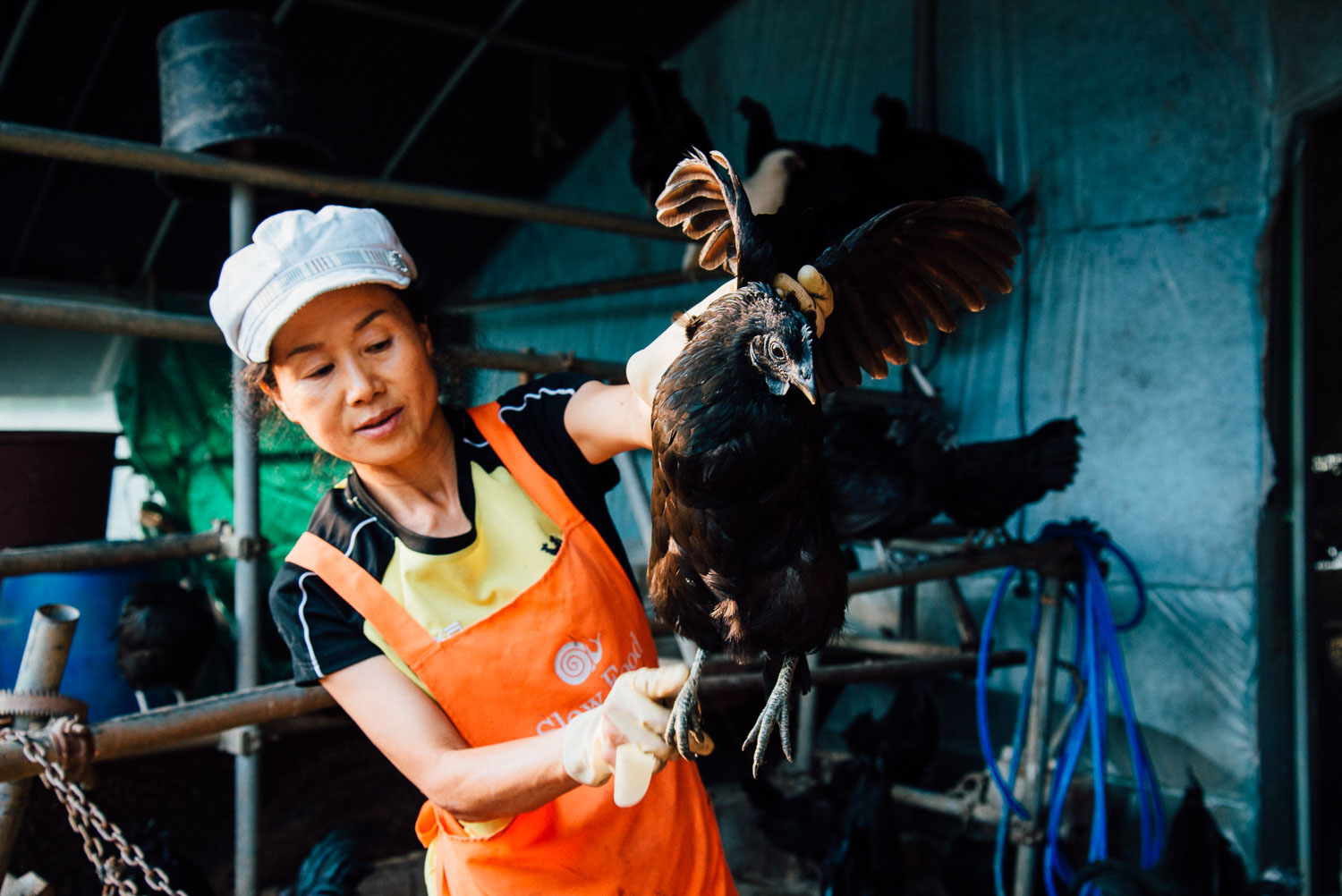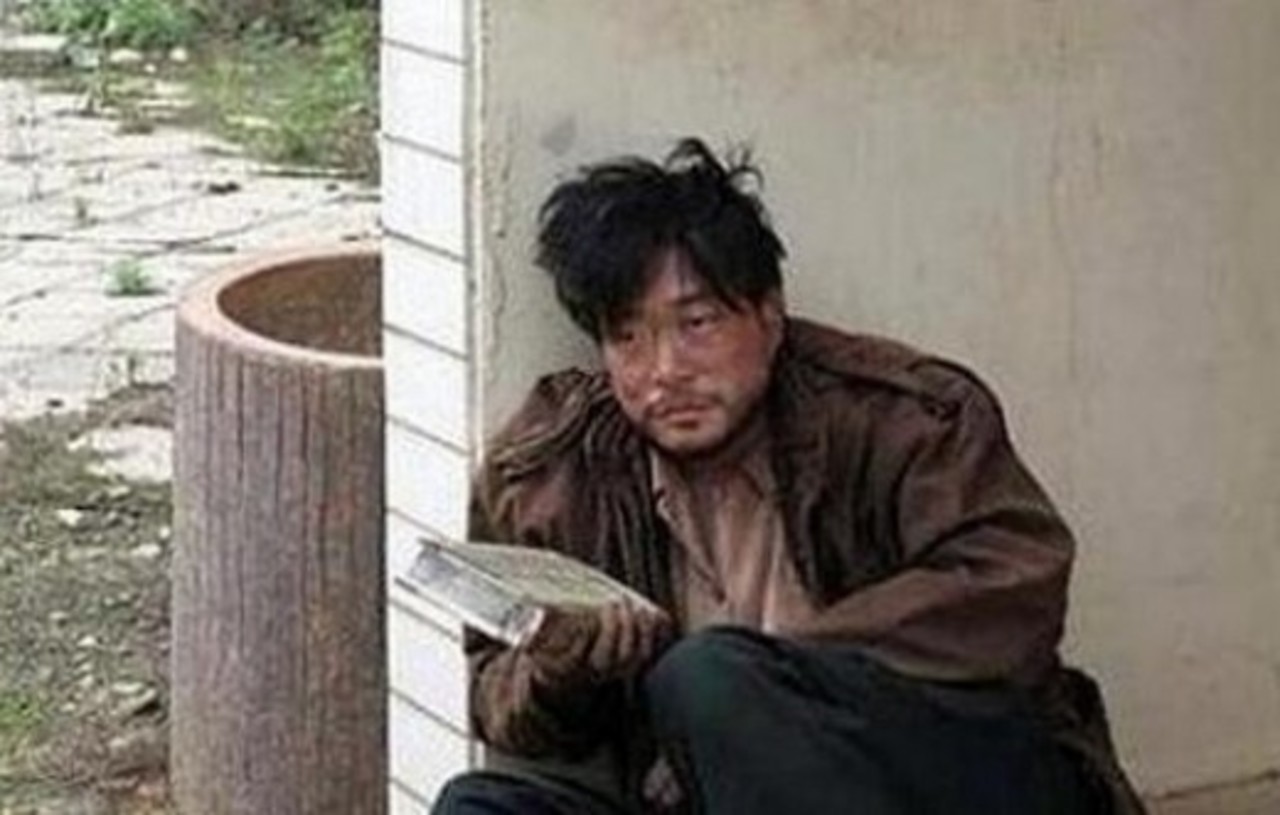
Black Fowl Down? Avian Influenza Outbreak Threatens Indigenous Poultry Stock
Visitors approaching the entrance to Yeonsan Ogye Black Chicken Farm in Nonsan, South Chungcheong Province, are normally greeted by a particular sight: hundreds of chickens, clad in black, roaming freely about the yard. Since November, however, this is no longer the case. The start of winter in South Korea last year marked the spread of a particularly potent variety of avian influenza (AI). Farms where the virulent H5N6 strain was detected were forced to cull their entire populations, usually numbering in the tens of thousands. Nationwide, the total figure reached 33 million by mid-February. Factory farms were worst affected, while small-scale poultry producers using sustainable methods were largely spared.
One notable exception was Ogye Farm, which could not escape the economic and bureaucratic consequences of the outbreak despite taking exceptional care of its chickens.
[ngg_images gallery_ids=”15″ display_type=”ds-nextgen_royalslider”]
Black Chicken
Ogye Farm occupies a unique niche in the the South Korean poultry market, cultivating only the native Yeonsan Ogye breed of black chicken. The species, characterized by its black feathers, skin and bones, rose to prominence when Lee Hyeong-Heum, fourth great-grandfather of Ogye Farm’s current operator, served it in soup to Cheoljong, the 25th king of Joseon. The black chicken flourished under royal favor, but never became an economically viable breed because of its slow maturity rate and low egg production. With its survival thus dependent on royalty, it lost its prominence in tandem with Joseon’s demise. For the past 120 years, Ogye Farm has remained the only breeder of the true Ogye chicken.
The geographical and genetic isolation of the species makes it extremely vulnerable to changing environmental conditions: A single natural disaster or disease outbreak has the potential to decimate the entire population. The histories of similarly isolated agricultural products, like the bananas of Honduras or potatoes of Ireland, are harbingers of Ogye’s possible extinction. In order to prevent such a disastrous scenario from unfolding, Ogye’s chickens are separated once every two years to ensure that if one flock should submit to fate, the others would be spared. In July 2016, the farm moved to avert the threat of AI by relocating half of its population to Sangju, an isolated town 200 kilometers from Yeonsan.
Not four months after the relocation, the highly contagious H5N6 strain of avian influenza was detected in South Korea. The outbreak, which started in November 2016 (and still rages on), has been especially virulent, guaranteeing high mortality rates if not contained. South Korea’s Ministry of Agriculture, Food and Rural Affairs issued a maximum-level alert and temporary nationwide movement bans in order to contain the virus. Although no farms in South Chungcheong were struck by the disease, the ministry imposed a quarantine on Ogye Farm.
Dangers of Factory Farming
Because of the flock’s free-range lifestyle, the ministry singled out Ogye as more vulnerable to exposure to wild birds and to patrons of the farm’s restaurant who could be unwittingly carrying the virus onto the site. The entire Yeonsan Ogye chicken population was locked inside coops normally only occupied at night, and Lee Seung-Sook, current steward of Ogye, was asked to use chemicals to sanitize her farm. Although Lee agreed to the preventative measures, she viewed them as unnecessary.
Ogye chicken may be almost as genetically limited as factory-farmed fowl, but the techniques used to raise them at the Lee family farm have produced a distinctly positive outcome. Despite the government’s concerns about Lee’s farm, her chickens are rarely sick. Lee credits it to prioritizing the well-being of the species above economics; she provides her 3,000 or so chickens with large, natural areas to roam, exceptional veterinary care, and organic, seven-ingredient feed that includes ginseng and green tea.
By contrast, factory-farmed birds are forced to grow beyond their natural state, resulting in weakened immune systems. When compounded with cramped living quarters, this allows diseases like AI to spread unhindered through battery farms once just a single bird is infected.
The quarantine, Lee insisted, only serves to undermine her chickens’ immunity. “[Chickens are the] same as human beings,” she explained. “If [they] are healthy, no virus can invade [them].” Lee posits that unhealthy conditions are to blame for the outbreak. Although this may be a simplified view of how the disease spreads, her opinion is scientifically supported.
Rather than converting to sustainable, albeit more intensive, husbandry practices, factory farmers try to prevent sickness by blindly vaccinating their flocks. Overuse of antibiotics, which occurs at many factory farms, has also promoted antibiotic resistance. In an interview with the Korea Herald, Park Choi-kyu, a professor of veterinary science at Kyungbuk National University, noted that “as long as the stockbreeding farms stick to the system of mass breeding egg-laying hens, no quarantine measure will work.” The government should recognize that factory farming systematically compromises animals’ immunity, rather than simply imposing quarantines after disease breaks out.
The government eventually declared Ogye Farm clear of potential cases, but also asked Lee to spray it with chemicals to kill any possible traces of avian influenza. This measure, however, will also kill beneficial microorganisms living in the soil. A decontamination station was also installed on the main road leading up to her farm, but it was easily rendered ineffective by restaurant patrons and village residents using alternative roads or driving through the station too quickly. Although both Nonsan City Hall – the local authority – and agricultural officials called at least twice daily from the beginning of the quarantine to monitor the condition of Lee’s chickens, they did not fix the quarantine protocol, prompting questions as to whom these measures were put in place for. Were the measures put in place for the sake of Ogye chickens or for the government’s own agenda?
Balancing Economics
Quarantine is a usual way of containing a virus. When a case of AI is detected, the protocol is to serve surrounding farms within a 10 kilometer radius with quarantine orders. But no cases affected farms within that radius of Ogye Farm, nor even in the same province. It struck me that quarantining Ogye Farm was an unnecessary overreaction. Meanwhile, the government did not address the question of why AI was spreading so rapidly at factory farms.
Does the government really care about the black chickens? The South Korean Government did not recognize the Yeonsan Ogye black chicken as the 265th designated ‘Natural Korean Monument’ until 1980. It took 31 more years after this for the government recognize its responsibility for preserving this part of the country’s ecological heritage by subsidizing the farm. Even today, the seemingly punitive measures imposed on Ogye Farm have been imperfect, and hardly in the best interest of the chicken.
The unfortunate reality is that the government sides with consumers, most of whom have come to expect cheap protein on their tables, and producers, who are responding to that demand with industrial poultry husbandry practices. It means privileging conventional battery farms over all else.
“The problem is that people eat too much meat,” Lee explained. “If everyone ate less [meat], we wouldn’t need to keep birds in cages.”
Throughout the quarantine period, people continued to frequent the farm’s restaurant. Although the farm’s most famous feature – freely roaming black chickens – was conspicuously missing, only a family of four from Daegu inquired about them during the week I spent on the farm in February. The man and his wife decided to bring their two small children to the farm to see the chickens, because “there have been no new cases of AI [nationwide] since February, so it is safe.”
Like most South Koreans, their only concern stemming from the quarantine was when they would be able to consume chicken again. This insatiable hunger has helped drive the unsustainable farming practices witnessed today.
But one good thing to come out of the outbreak is a small shift in consumption habits, Lee notes.
The demand for eggs from the farm has increased dramatically since the outbreak, with hotels and high-end businesses paying a hefty premium. Their choice showed that at least some South Koreans cared about things beyond just stocking their pantries. Ogye Farm charges 10 times the price of regular eggs, a major sum to pay if safety and quality are not a concern. Although it is just a small sign of progress, the development has given Lee hope that consumers are starting to consider quality over quantity and, in turn, force poultry farmers to use more humane and sustainable practices.
* * *
The outbreak’s effect is partly economic: Egg prices reached levels that forced the South Korean government to import them from the United States. Poultry stocks will also take years to recover, but the industry itself is salvageable. What cannot be saved is the health and diversity of the environment if factory farming is left to continue as it is.
When asked what steps she plans on taking to protect her flock in the future, Lee recognizes that there is not much she can do aside from continuing with her traditional farming practices. The responsibility lies with the government and the general public who must think beyond immediate benefits. Money can be spent and made but the environment and culture cannot be resurrected once destroyed. Only when the government and people recognize this fact and support ethical farming practices can tragedies such as AI be truly prevented.
Just prior to the publication of this essay, the South Korean government announced that AI was detected in the Nonsan area, where Ogye Farm keeps some of its chickens.

